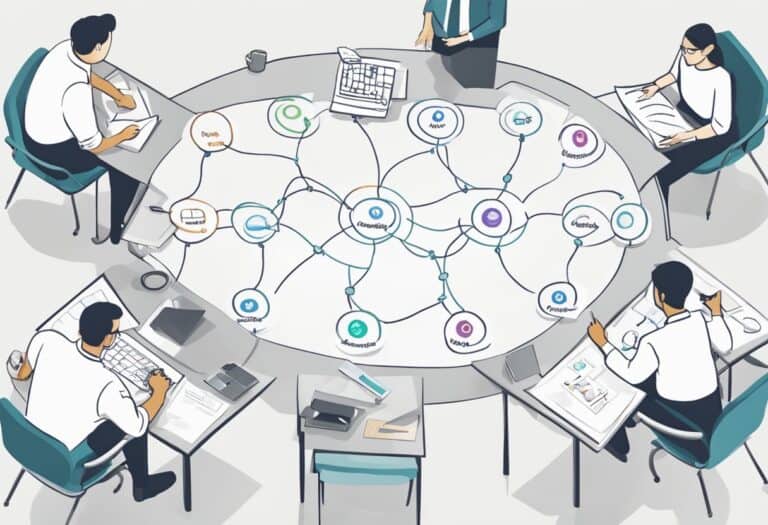Are you struggling to implement successful changes within your organization? Perhaps it’s time to invest in your change leaders. These individuals play a critical role in driving transformation and ensuring that initiatives are executed effectively. However, without proper training and development, even the most talented and motivated change leaders may struggle to achieve their goals.
In this article, we will explore tips for empowering your change leaders through effective training. We will discuss how to:
– Identify the necessary skills and knowledge for successful change leadership
– Create a customized training program
– Engage and motivate your change leaders
– Provide ongoing support and development opportunities
– Measure the impact of your training program
Whether you are just starting to build your change leadership capabilities or are looking to enhance your existing program, these tips will help you create a culture of change and drive meaningful results.
Identifying the Skills and Knowledge Needed for Successful Change Leadership
It’s crucial to pinpoint the necessary skills and knowledge for successful change leadership if you want to ensure your team is prepared for any challenges that come their way.
Common misconceptions about change leadership include the belief that only senior leaders are responsible for it, or that it’s just about managing people. In reality, successful change leadership requires a wide range of skills and knowledge, including strategic thinking, communication, emotional intelligence, and project management.
One key challenge in identifying the skills and knowledge needed for change leadership is that they can vary depending on the specific change initiative and the organization’s culture. However, there are some general skills and knowledge that are essential for all change leaders. For example, they need to be able to create a compelling vision for the change, build trust and credibility with stakeholders, and manage resistance to change effectively.
Another common challenge is ensuring that change leaders have access to the right training and development opportunities to build the necessary skills and knowledge. This can include formal classroom training, coaching and mentoring, job rotations, and on-the-job learning.
It’s important to provide a range of options to cater to different learning styles and preferences, and to ensure that training is ongoing and aligned with the organization’s priorities and goals. By investing in the development of your change leaders, you can empower them to drive successful change initiatives and create a culture of continuous improvement.
Creating a Customized Training Program for Your Change Leaders
Crafting a tailored program that suits the needs and abilities of your change agents is like molding a piece of clay into a unique and functional work of art.
To start, you need to conduct a needs assessment to determine the specific skills and knowledge that your change leaders require. This will enable you to design a training program that is relevant and addresses the specific needs of your team.
When creating a customized training program, it’s important to consider the various training delivery methods available. Traditional classroom training is still an effective method, but you may also want to consider blended learning, which combines online learning with face-to-face training. E-learning is also becoming increasingly popular, as it allows participants to learn at their own pace and on their own schedule.
Consider which delivery method will be most effective for your change leaders and tailor your program accordingly.
Ultimately, a well-designed training program can help to empower your change leaders and equip them with the skills and knowledge they need to successfully lead change initiatives. By investing in your team’s development, you’ll be making an investment in the future of your organization.
Remember to regularly evaluate the effectiveness of your training program and make adjustments as necessary to ensure that it continues to meet the needs of your team.
Engaging and Motivating Change Leaders Throughout the Training Process
Engaging and motivating your change agents throughout the training process is crucial for ensuring their success and the long-term success of your organization. Building rapport with your change leaders is the first step towards engaging them. You need to understand their goals, motivations, and concerns to create a training program that is tailored to their needs.
You can achieve this by involving them in the planning process, listening to their feedback, and keeping the lines of communication open. Effective communication is another key factor in engaging and motivating your change leaders. You need to communicate clearly and consistently to ensure that they understand the objectives and expectations of the training program.
Use various communication channels such as email, video conferencing, and face-to-face meetings to keep them informed and engaged. Encourage two-way communication by asking for their feedback, answering their questions, and addressing their concerns promptly. Engaging and motivating your change leaders throughout the training process requires a proactive and ongoing effort.
You need to provide them with the necessary resources and support to help them succeed. Celebrate their successes, recognize their contributions, and provide them with opportunities for growth and development. By investing in your change leaders, you’re investing in the future of your organization.
Providing Ongoing Support and Development Opportunities for Change Leaders
Keep your change agents motivated and successful by providing ongoing support and development opportunities that will benefit both them and your organization. Change is a continuous process, and it’s important to ensure that your change leaders are equipped with the necessary skills to adapt to new situations.
Peer-to-peer coaching and mentoring programs are great ways to provide personalized support to your change leaders. Encourage them to learn from each other and share their experiences to help each other grow.
Building communities of practice and learning networks are also effective ways to provide ongoing support and development opportunities to your change leaders. These communities allow your change agents to connect with professionals who share similar interests and goals, providing them with a platform to exchange ideas and best practices. This can help them stay up-to-date with the latest trends and techniques in their field and improve their skills.
Lastly, it’s important to provide your change leaders with access to training and development programs. This will not only help them improve their skills but also show them that you’re invested in their success. Providing opportunities for professional growth will keep your change agents motivated and engaged. Encourage them to attend workshops, conferences, and other training sessions that will help them develop their skills and knowledge. By investing in your change leaders, you’re investing in the success of your organization.
Measuring the Effectiveness and Impact of Your Change Leadership Training Program
If you want to see the fruits of your labor, take the time to evaluate the bang for your buck and measure the impact of your change leadership program.
Tracking progress is a crucial part of measuring the effectiveness of your training program. You need to identify specific metrics to measure the progress of your change leaders, such as the number of successful change initiatives, the time it takes to complete these initiatives, and the level of employee engagement.
Gathering feedback is another essential aspect of measuring the effectiveness of your training program. You need to get feedback from your change leaders, their teams, and other stakeholders to understand how well your training program is working.
Ask for feedback on the content, delivery, and relevance of the training program. Also, ask for feedback on how well your change leaders are applying what they’ve learned to their work.
By tracking progress and gathering feedback, you can identify areas of improvement and adjust your training program accordingly. Don’t be afraid to make changes to your training program based on the feedback you receive.
Continuous improvement is essential to ensure that your change leaders are equipped with the skills and knowledge they need to drive change successfully in your organization.
How Can Effective Training Help in Gaining Buy-In for Change from Senior Leadership?
Effective training plays a vital role in getting buy-in from leadership for organizational change. By demonstrating the benefits of the proposed changes and providing the necessary skills and knowledge, training helps senior leaders understand the value of the initiative and increases their support and commitment.
Conclusion
Congratulations! You’ve successfully reached the end of this article on empowering your change leaders with effective training.
You’ve learned how to identify the skills and knowledge needed for successful change leadership, create a customized training program, engage and motivate change leaders, provide ongoing support and development opportunities, and measure the effectiveness and impact of your training program.
By implementing these tips, you can empower your change leaders to drive positive change within your organization. With the right training, they can become the driving force behind innovation, growth, and success.
You can create a workplace culture that fosters creativity, collaboration, and continuous improvement, and your change leaders can lead the way.
So, go ahead and apply these tips to your own change leadership training program. Remember, the sky’s the limit when it comes to empowering your change leaders. With the right training and support, they can achieve great things and take your organization to new heights.





